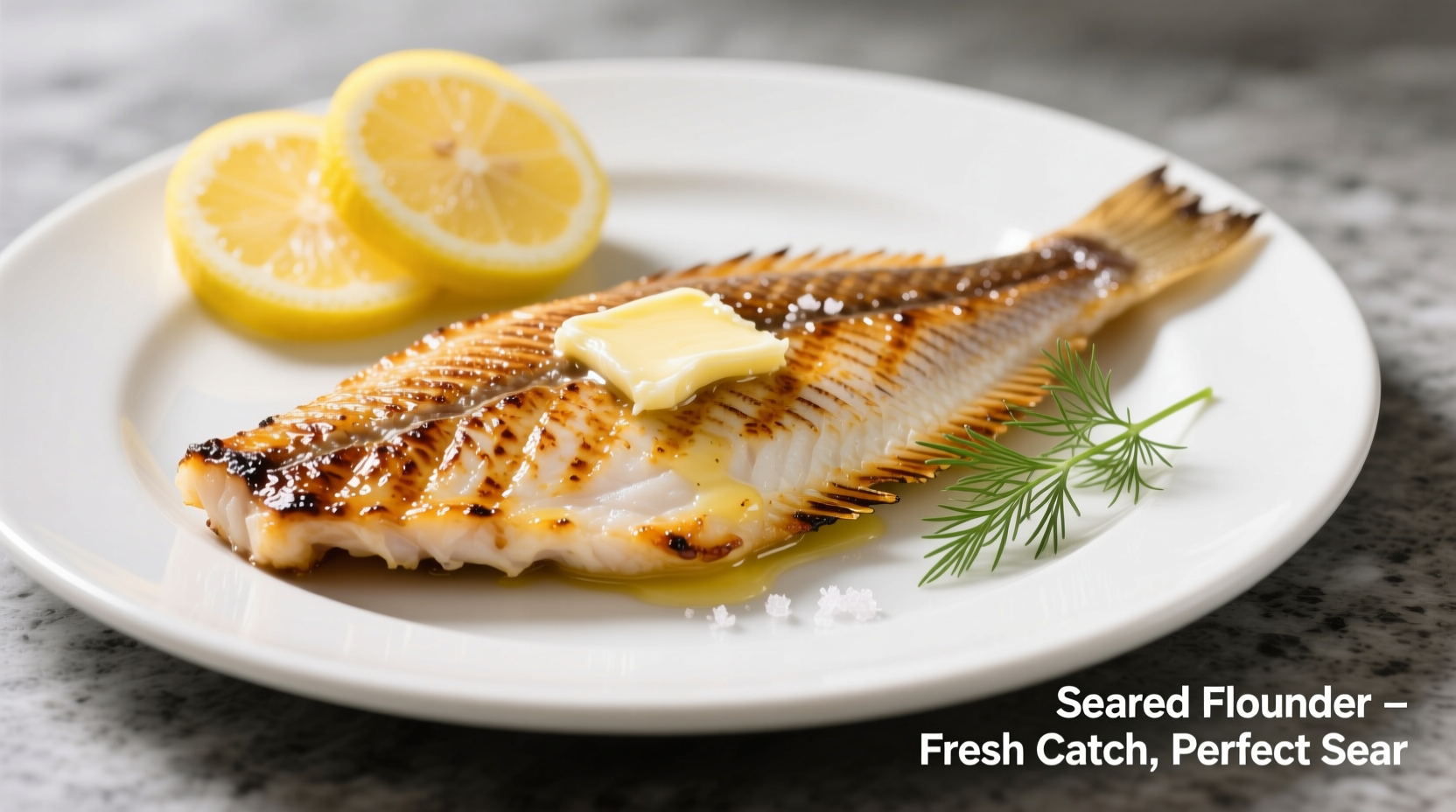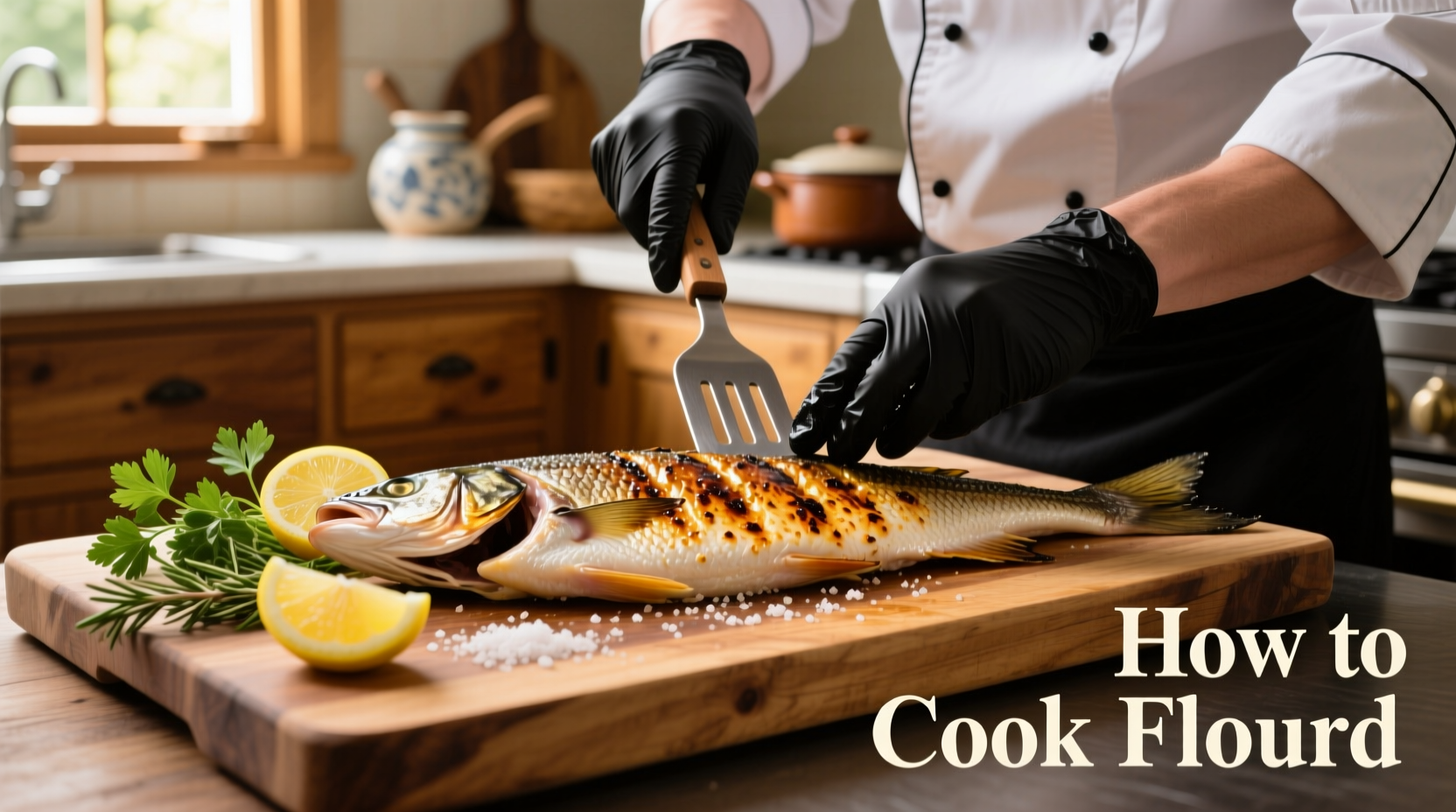Flounder, with its delicate texture and mild flavor, often intimidates home cooks who worry about overcooking or ruining this premium seafood. The truth is, cooking flounder perfectly requires just three key elements: proper temperature control, minimal handling, and precise timing. Whether you're using fresh or properly thawed frozen flounder, this comprehensive guide delivers restaurant-quality results every time.
Why Flounder Deserves Special Cooking Attention
Unlike heartier fish like salmon, flounder's thin fillets and delicate structure demand specific cooking approaches. According to the U.S. Food and Drug Administration, flounder should reach an internal temperature of 145°F (63°C) or until the flesh appears opaque and flakes easily with a fork. The National Oceanic and Atmospheric Administration (NOAA) confirms that proper cooking technique preserves flounder's nutritional benefits while eliminating food safety concerns.
| Cooking Method | Optimal Temperature | Approximate Time | Best For |
|---|---|---|---|
| Pan-Seared | 375°F (190°C) | 3-4 minutes per side | Quick weeknight meals |
| Baked | 400°F (204°C) | 10-12 minutes | Meal prep and entertaining |
| Grilled | Medium-high heat | 4-5 minutes per side | Summer cooking |
| Steamed | Simmering water | 6-8 minutes | Health-conscious preparation |
Essential Preparation Steps Before Cooking
Proper preparation makes the difference between flounder that falls apart and perfectly intact fillets. Start by patting your flounder completely dry with paper towels—this critical step, emphasized by culinary professionals worldwide, creates the perfect surface for searing and prevents steaming. Season just before cooking, as salt draws out moisture when applied too early. For best results, bring flounder to room temperature for 15 minutes before cooking, but never leave seafood at room temperature for more than 30 minutes according to FDA food safety guidelines.

Four Professional-Grade Cooking Methods
1. Pan-Seared Flounder (The Weeknight Favorite)
This how do you cook flounder method delivers restaurant-quality results in minutes. Heat 1-2 tablespoons of high-smoke point oil (avocado or grapeseed work best) in a heavy skillet over medium-high heat until shimmering but not smoking. Season flounder with salt and pepper, then place skin-side down if skin-on. Cook undisturbed for 3-4 minutes until golden brown and releases easily from the pan. Flip carefully and cook 2-3 minutes more until opaque throughout. The USDA recommends using an instant-read thermometer to verify 145°F internal temperature.
2. Baked Flounder (Effortless and Consistent)
Preheat oven to 400°F with rack in the center position. Place flounder on a parchment-lined baking sheet. Drizzle with olive oil and your choice of seasonings—lemon zest, dill, and garlic make a classic combination. Bake for 10-12 minutes until flounder reaches 145°F internally. For added moisture, top with tomato slices or a light broth-based sauce before baking. This baking technique for flounder ensures even cooking without constant monitoring.
3. Grilled Flounder (Summer Entertaining)
Grilling delicate fish requires special attention. Preheat grill to medium-high and clean grates thoroughly. Oil grates generously or use a fish grill basket. Place flounder diagonally across grates to prevent sticking. Grill 4-5 minutes per side, resisting the urge to move the fish until it releases naturally. For thicker cuts, finish over indirect heat. This grilled flounder technique preserves delicate structure while adding smoky complexity.
4. Steamed Flounder (Health-Conscious Preparation)
For how to cook flounder without added fats, steaming delivers exceptional results. Place flounder on a heatproof plate above simmering water in a covered pot. Add aromatics like ginger, scallions, and citrus slices directly to the fish. Steam 6-8 minutes until opaque. This Asian-inspired flounder cooking method preserves maximum nutrients while enhancing natural flavors.
Flavor Pairing Secrets from Professional Kitchens
Flounder's mild flavor pairs beautifully with acidic elements that brighten without overwhelming. Lemon, lime, and vinegar-based sauces complement rather than mask the delicate fish. Fresh herbs like dill, parsley, and chives add complexity without dominating. For how to season flounder properly, consider these professional combinations:
- Mediterranean style: Lemon, capers, olives, and oregano
- Asian fusion: Ginger, soy sauce, sesame oil, and scallions
- French classic: White wine, shallots, butter, and tarragon
- Simple perfection: Just lemon, salt, and high-quality olive oil
Troubleshooting Common Flounder Cooking Problems
Fish sticks to pan: Ensure proper preheating and that flounder is completely dry before cooking. Wait until fish releases naturally before attempting to flip.
Fish falls apart: This typically indicates overcooking. Use a timer and check internal temperature—flounder continues cooking after removal from heat.
Dry or rubbery texture: Reduce cooking time by 1-2 minutes. Flounder is best slightly underdone in the center when removed from heat, as carryover cooking will finish the process.
Strong fishy odor: Fresh flounder should have a clean, ocean-like scent. Soak in milk for 15-20 minutes before cooking to neutralize any strong odors—a technique recommended by seafood experts at the Seafood Health Facts organization.
Nutritional Benefits of Properly Cooked Flounder
When prepared using appropriate cooking techniques for flounder, this fish delivers significant health benefits. A 3-ounce serving provides approximately 15 grams of high-quality protein with just 90 calories. Flounder contains essential omega-3 fatty acids that support heart health, though levels are lower than in fattier fish like salmon. The American Heart Association recommends consuming at least two 3.5-ounce servings of fish per week, making properly cooked flounder an excellent addition to a balanced diet.











 浙公网安备
33010002000092号
浙公网安备
33010002000092号 浙B2-20120091-4
浙B2-20120091-4